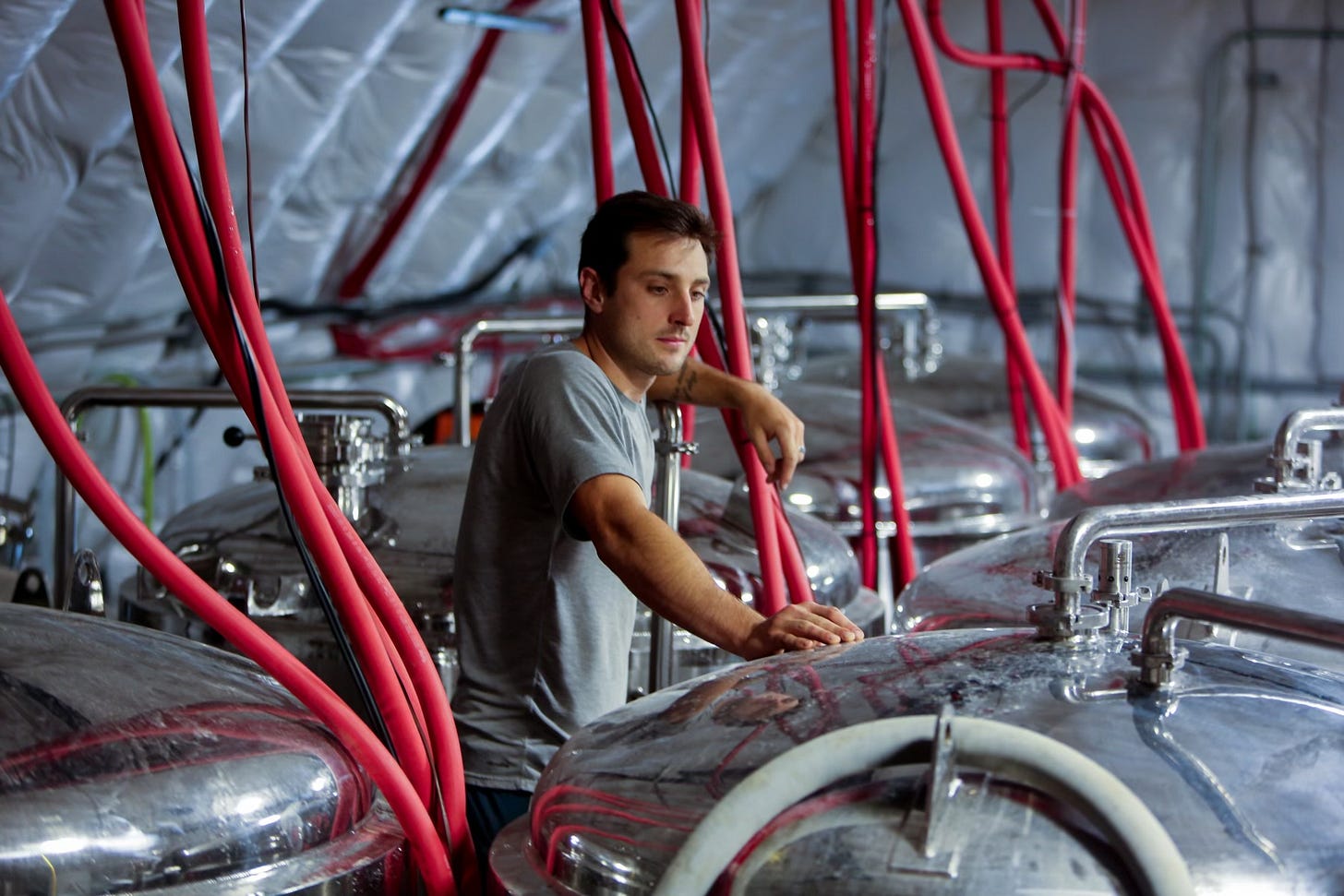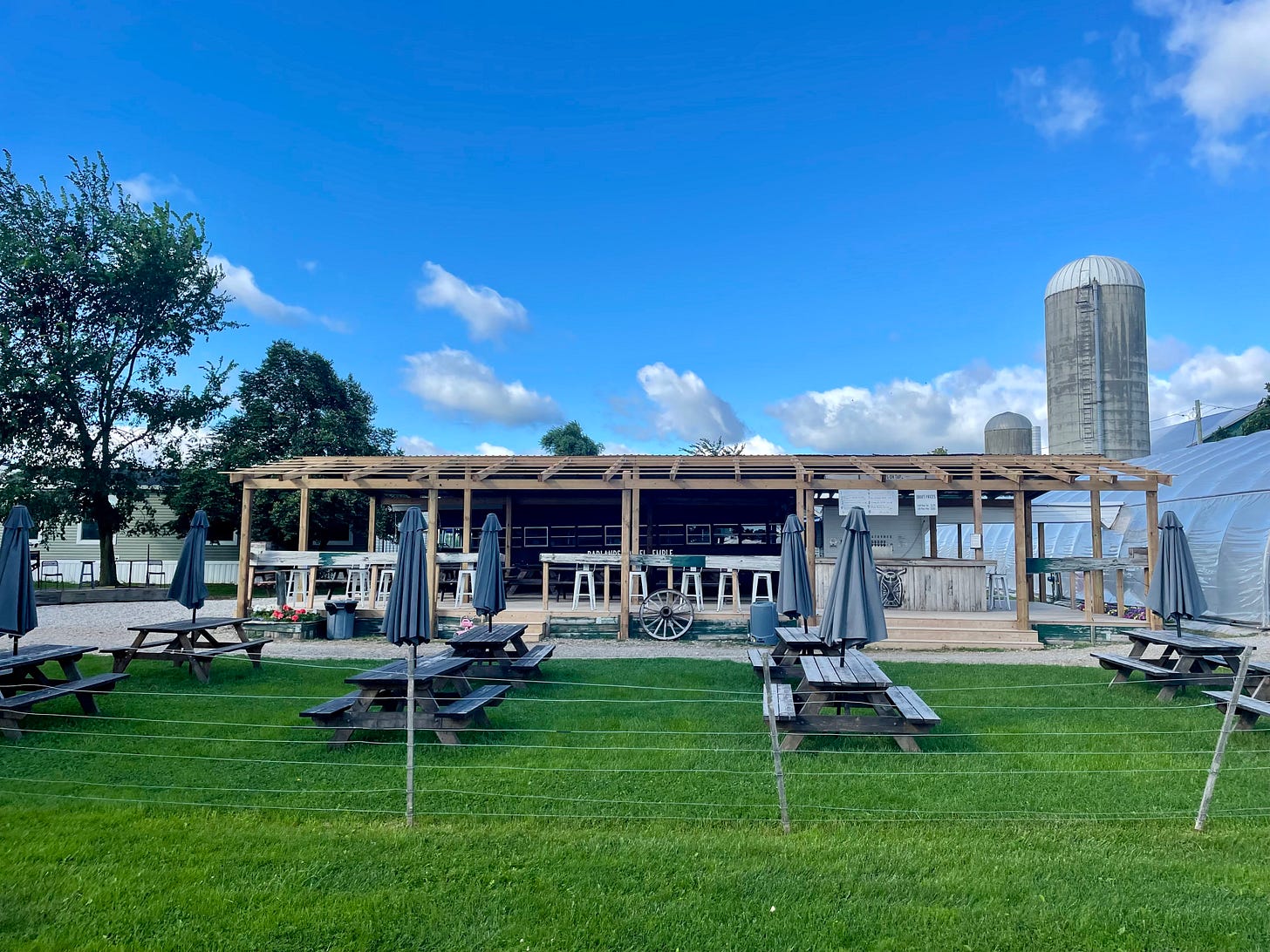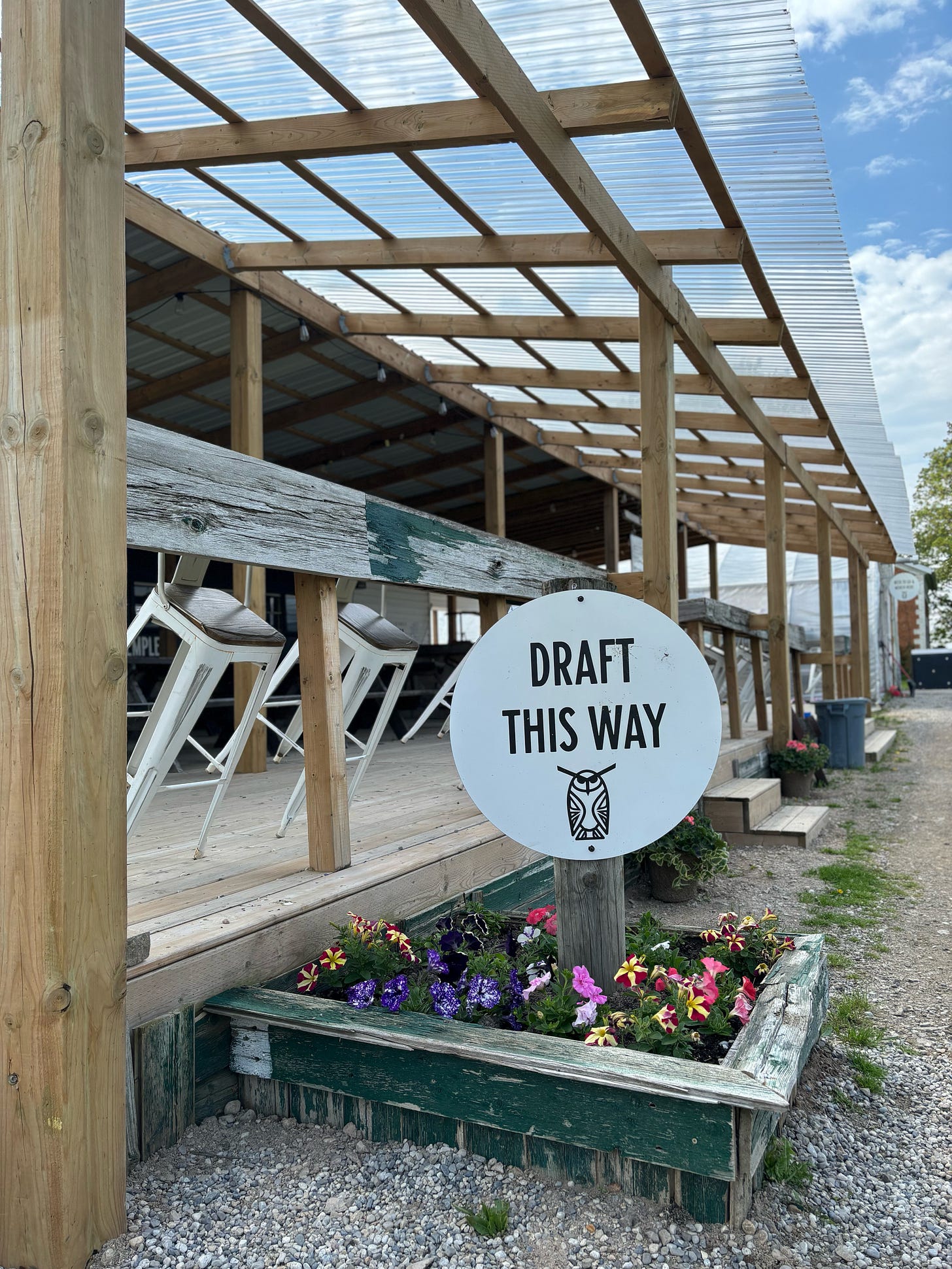Prost Profiles: Troy Baxter/Badlands Brewing, Caledon, Ontario, Canada
Canadian farm brewery makes incredible hazy IPAs, will pour at next month's Rochester Real Beer Expo.
Ask Troy Baxter for advice on launching your own small business and he’d probably tell you, “Don’t listen to me. Do the opposite of everything I did.”
When Baxter, along with his childhood best friend, Mike Nuttall, and wife, Grace Wilkinson, launched Badlands Brewing in rural Caledon, Ontario, in 2017, he said he did everything wrong. But they did the wrong things mainly for practical reasons — they were young, poor, and didn’t know any better.
The 1-barrel brewery (31 gallons at a time) was located in an old 600-square-foot calf barn on Wilkinson’s parent’s 100-acre farm. (Grace and Troy still live next door.) Fast forward seven years and Badlands has greatly expanded its fermentation capacity and constructed a taproom like no other. (Before the pandemic, Badlands utilized an old church bus as a taproom. I’m not kidding.)
And now Badlands, producer of some of the finest, most flavorful hazy beers in this region (and you know I don’t say that lightly), is slated to join us next month at the Rochester Real Beer Expo.
Don’t believe me, here’s the world’s quickest elevator pitch from Baxter. “We consider ourselves an IPA factory that sometimes makes other beers. That’s predominantly what we do. If you’ve never been to our space, I think a lot of people are surprised when they come here. It’s hard to describe what it is until you’re here. Almost no one is ever disappointed. It was cobbled together by us and we love to hang out with everyone.”
To get you even more amped for the 2024 Rochester Real Beer Expo, which will take place on Saturday, June 8, at Innovative Field in downtown Rochester, I am again sharing some interviews to introduce attendees to festival newcomers.
Third Moon is among that group. In total, we’re gonna have more than 75 breweries, some really lovely non-alcoholic options, three cideries, and even a local coffee roaster with some cold brew. I think I’m most excited about the Canadian breweries coming across the border to party with us. Especially because I know how complicated it is to gain approval to enter the country with beer. These Canadian spots are putting in the work and I think you’re really gonna love what they offer up.
VIP tickets are now officially sold out. I am also particularly proud of the fact that the ticket prices haven’t increased at all this year. More details here: https://www.ticketreturn.com/prod2new/BuyNew.asp?EventID=343454.
What follows is a lovingly edited transcript of our recent conversation:
Cleveland: How did this place come together?
Baxter: I am sorry about all the background noise, I’m brewing right now. (Aside: To be fair, I got my calendar entries mixed up and called Troy a day earlier than our scheduled interview. So he kindly fit me in and didn’t call me out for being a dumbass.)
Cleveland: That makes this more authentic, right?
Baxter: Absolutely, absolutely. I was just a homebrewer and I started doing that, because, very simply, I couldn’t get the beer I wanted in the province. In hindsight, it was some amount of misplaced confidence where I said, ‘Yeah, I’ll make it myself.’ I’ve only ever brewed here. Didn’t have any experience or anything like that. I started brewing in our farmhouse. We’re a farm brewery, as you’re probably aware. I started to brew and that got out of hand. At this point, I was like, ‘You know what? People still aren’t making the beers I wanna drink, I’ll just open a brewery.’
I didn’t have a lot of money. It was just my wife, myself, and my business partner, who is a childhood friend. I’ve known him quite literally my whole life. We grew up on the same street and he’s a year younger than me. I’ve known him since then. Our parents were friends. We consider it a family business.
We were very poor. I was the oldest one when we started plotting how to open this business. I was 24. My wife was 22. Mike was 23. As you can imagine, we didn’t have a lot of money to start. So we started with a 1-barrel brewhouse and a few tanks, unjacketed, like homebrew-style. Then we just started making beer.
We started officially selling beer in 2017 but we took two years to get open. So for me, it feels like we’re approaching 10 years.
Badlands has since grown to what Baxter calls a 15-barrel brewhouse. He designed and built the new brewery. He calls it a “mixed system specifically set up for how we brew IPA.” Quite a journey from his homebrew roots in 2014, someone seeking the hazy IPAs he couldn’t find in Ontario, to the farm-centered setup Badlands now employs. (Yes, there are 20 cows on the Badlands family farm.) At that time, Ontario was still really focused on “really, really malty, really, really bitter IPAs,” Baxter said. “They were fine, a good intro. But after having a hazy IPA and really liking it, you’re kinda like, ‘I really just want that.’”
Cleveland: Your story mirrors Third Moon quite a bit. Chris and Bebo stated how they looked for hazy IPAs in Ontario, couldn’t find any, and then decided to brew their own.
Baxter: That gap in the market, in hindsight, was a huge blessing for us. Otherwise, we definitely wouldn’t exist. We still don’t make any money. But back then, we literally made none. Back then, I had a day job (for the first four years of the brewery). We weren’t paying ourselves or anything. We were just trying to exist.
One-barrel brewing is not a recommended way to start your business. Build the brand. It’s like a proof of concept. I’m not an industry guy. I didn’t have any prior brewing experience. I didn’t know if it would work out. It was just one of those things where I was like, ‘Whatever, I’m young. I lose all my money, it is what it is. I can make more.’
Cleveland: For those who haven’t visited, can you describe your property?
Baxter: We’re in Caledon. It’s just north of Brampton. We are a farm brewery. There is a 100-acre farm. We’ve got cows and crops. We’re a really functioning farm still. One hundred acres these days is bordering on a hobby farm. But we consider the cows more like pets than anything else. Right now is calving season. We should have like 10 more calves coming soon.
We started out brewing in the calf barn. And we just retrofitted it into a brewery. Everything we did is really not smart or efficient or scalable. It worked for what we needed it do.
Cleveland: Where did the name come from?
Baxter: In our area, there’s this little plot of land called the (Cheltenham) Badlands. (Aside: It’s considered one of Ontario’s geologic gems and looks like a place I totally wanna visit.) It’s like a five-minute drive north of us. And the reason they call it the Badlands is because it’s just this large clay deposit that couldn’t be farmed back in the day. It’s quite literally ‘bad lands.’ It looks like the surface of Mars. It’s really cool. And we’re so close to it. We were like, ‘Hey, no one is using this name in Canada. So let’s go for it.’ We were very lucky to get the trademark. But we do own the trademark now!
Cleveland: I don’t want to call it mistakes, but it seems like you’ve learned from your mistakes.
Baxter: It’s just expensive learning. All learning costs money, depending on how you wanna do it. We just did it this way.






